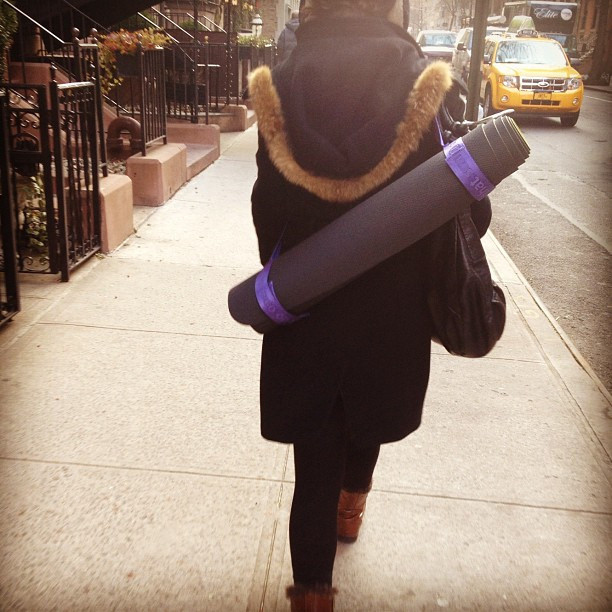One of the many things I love about yoga is that it is so completely analogous to life.
Everything that happens on the mat has a direct correlation to everything that happens off the mat. Everything we do in yoga trains us to be more mindful, compassionate and joyous people—whether we realize it or not.
As in life, the meat of yoga is not in its spectacular moments, it’s one armed handstands or garbha pindasana (baby in the womb pose—never heard of it? Don’t worry. You can have a complete life as a yogi and never even utter the words), it is in the plain old down dogs, the sukhasanas (easy seated pose) and of course, savasana (resting pose).
I will go so far as to say that the real meat of yoga, the marrow of the bone, is not even in those poses, but in what happens between them—the transitions between one and the other.
I am as guilty as the next person of slipping into the habit of thinking pose to pose and entirely missing what transpires in the interim, and when I do that, I am actually missing out on a huge amount of what yoga, and indeed life, has to offer. But I’ve learned that I can change that mind set, slow down, and practice living breath-by-breath.
Imagine if we became obsessed with an inversion we knew was coming at the end of a class, and spent our entire time fixating on what was going to happen when we attempted it, or if we spent an entire day similarly anticipating a big event—a job interview, a phone call from the person we went out on a date with the night before, or even just a special meal. In both cases, we would rob ourselves of countless moments before, and even during and after, these events, by not experiencing our life in real time.
Fortunately for us, the fix is simple (not easy, but simple)—cultivating awareness.
To better cultivate moment to moment awareness, I often use the suggestion of Thich Nhat Hanh, who instructs us in his book, “The Miracle of Mindfulness,” to get in the habit of saying what we are doing. His example is washing the dishes—as we wash them we can say to ourselves, “I am washing the dishes.” It is a surprisingly effective tool to snap the present into focus.
This works equally well in yoga. As we move from downward facing dog to plank pose, for example, we can say, “I am moving from dog to plank” on our exhalation.
There are an infinite number of “lost” moments in all of our lives—lost to the black hole of inattention, never to be recovered, and few of us will ever master the ability of truly being aware of each moment, each breath, as it happens. But we can minimize that loss, and a great place to start is on the mat.
The next time you practice, experiment with the idea of paying special attention to the spaces between your poses, to the movements you make as you travel from one to the next, to the emotions that come up as you involuntarily think about your next pose even while you are in the one before it, and your ability to have those thoughts and emotions and still bring yourself back into the present moment.
You can try this off the mat as well; notice the silence between someone else’s words rather than just the words themselves, pay attention to how you move your fork between one bite of food and the next, pause between sleeping and waking and focus on your breath.
The more proficient we become at fully inhabiting all of our experiences—rather than just the more exciting ones— the more of our lives we will actually be living. There is richness and adventure in the ordinary, if only we take the time to stop and see it.
Love elephant and want to go steady?
Sign up for our (curated) daily and weekly newsletters!
~
~
~
Editor: Travis May
Photo: Flickr/Fashionby He











Read 2 comments and reply